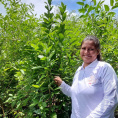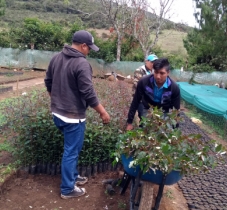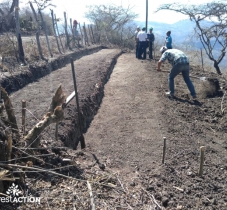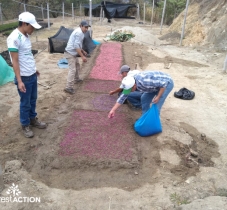Description
Nous fabriquons les pantoufles les plus cosy du monde dans un petit atelier artisanal au Pérou. Nos pantoufles sont fabriquées à 100% à partir de matériaux naturels. Notre matériau clé est la laine d'alpaga, une des plus douces laines au monde. Nous payons un prix juste pour un travail manuel, et soutenons ainsi nos artisans péruviens. Mais nous avons un autre projet qui nous tient également à coeur. Flemar, c'est aussi l'envie de soutenir les personnes à mobilité réduite. Notre co-fondateur Nassim vit en chaise roulante. Il est tellement bien Flemar aux pieds qu'il a eu envie de partager son bonheur avec d'autres. C'est pourquoi pour 15 paires vendues, nous offrons des Flemar à une personne à mobilité réduite. De plus, chaque commande est prise en charge par une personne en situation de handicap. Pour les envois, nous travaillons en effet avec une entreprise de travail adapté. Cela garanti du coeur, de la passion et de la douceur dans chacune des boîtes.
News from the field
Peru: socio-economic impacts of a project started 8 years agoInitiated in 2015, the project developed in the Peruvian region of San Martín, and led in the field by the Urku Centre, is the first project financed by Reforest'Action at the very heart of the Amazon
A landmark project for Reforest'Action Historically located around the city of Tarapoto, in the Cordillera Escalera Conservation Area, the project has expanded over the years to encompass three northeastern regions in Peru: San Martín, Loreto and Ucayali. Anchored in the upper Amazon, th
An overview of the projects supported by Reforest'Action in PeruEnd of 2021, our team went to monitor the 3 projects supported by Reforest'Action in Peru, but also to meet the partners who implement them on the field. Report in Tarapoto, Lamas and Piura.
In Peru, more than one million hectares of forest have disappeared in 15 years. In this country, that contains 13% of the Amazonian Forest, trees are essential to the health of unique tropical ecosystems, to the survival of a rare and often threatened biodiversity but also to the subsistence of mill















